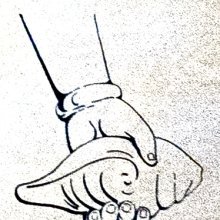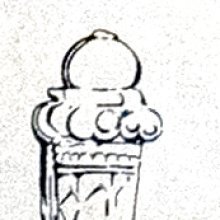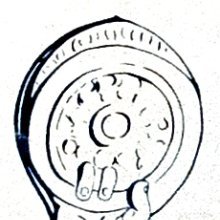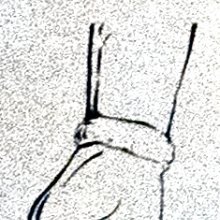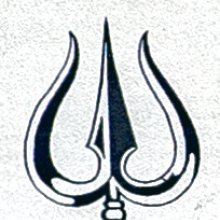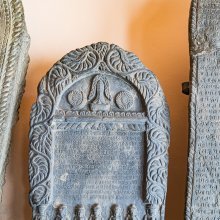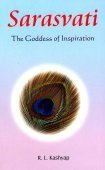Emblem: 1 definition
Introduction:
Emblem means something in Hinduism, Sanskrit. If you want to know the exact meaning, history, etymology or English translation of this term then check out the descriptions on this page. Add your comment or reference to a book if you want to contribute to this summary article.
Images (photo gallery)
(+21 more images available)
In Hinduism
Pancaratra (worship of Nārāyaṇa)
Source: archive.org: Catalogue of Pancaratra Agama TextsThe Emblem (in Sanskrit: Mudrikā) represents one of the various symbols given to initiates after the abhiṣeka-rite, as discussed in the tenth chapter of the Naradiya-Samhita: a Pancaratra document comprising over 3000 verses in 30 chapters presenting in a narrative framework the teachings of Narada to Gautama, dealing primarily with modes of worship and festivals.—Accordingly, Gautama wants to hear details concerning the qualifying abhiṣeka-bath that admits an initiate to deśika-status. [...] One type of abhiṣeka-rite requires only one pot (kalaśa) to be used, at the conclusion of which bathing ceremony the candidate is given the symbols of his new office—[e.g., an mudrikā or emblem]—along with a charge from his preceptor to pursue his duties (21-32). The initiate, in turn, honors this preceptor in all appropriate ways (33-37).

Pancaratra (पाञ्चरात्र, pāñcarātra) represents a tradition of Hinduism where Narayana is revered and worshipped. Closeley related to Vaishnavism, the Pancaratra literature includes various Agamas and tantras incorporating many Vaishnava philosophies.
See also (Relevant definitions)
Query error!
Full-text (+436): Dhvaja, Linga, Makaraketana, Mahisha, Sasin, Smaradhvaja, Pataka, Makara, Vrishadhvaja, Shikkekatara, Nripalinga, Setacchatta, Asidamshtra, Sitatapatra, Makaraketu, Shrivatsa, Mahishadhvaja, Shirahkapalin, Dhaja, Jarjara.
Relevant text
Search found 175 books and stories containing Emblem; (plurals include: Emblems). You can also click to the full overview containing English textual excerpts. Below are direct links for the most relevant articles:
Bhaktavijaya: Stories of Indian Saints (by Justin E. Abbott)
41.10: Two dogs vomit Shaivite emblems < [Chapter 41 - Mrityunjaya Swami]
18.4: God chooses Visoba Khechar as Nama’s Guru < [Chapter 18 - Life of Namdev (Continued)]
51.6: Nimbaraja’s story < [Chapter 51 - Tukaram (Continued)]
Kathasaritsagara (cultural study) (by S. W. Chitale)
Royal Insignia < [Chapter 2 - Political conditions]
Chamberss in the Palace < [Chapter 2 - Political conditions]
Description of Gods in the Kathasaritsagara < [Chapter 5 - Religion and Philosophy]
Guhyagarbha Tantra (with Commentary) (by Gyurme Dorje)
Text 8.19 (Commentary) < [Chapter 8 (text and commentary)]
Text 8.5-6 (Commentary) < [Chapter 8 (text and commentary)]
Chapter 8 - Consecration of All Limbs as the Maṇḍala < [Chapter 8 (text and commentary)]
The Great Chariot (by Longchenpa)
Part 4a.4 - The great mandala of the environment and inhabitants < [B. The explanation of meditation practice]
Buddhist iconography in and outside India (Study) (by Purabi Gangopadhyay)
Karttikeya (God of war) < [Chapter 2: Indian Buddhist Iconography (a Comparative Study)]
Indra and Vajrapani < [Chapter 2: Indian Buddhist Iconography (a Comparative Study)]
Jambhala and Kubera < [Chapter 2: Indian Buddhist Iconography (a Comparative Study)]
Skanda Purana (by G. V. Tagare)
Chapter 16 - Tāraka and Devendra Prepare for War < [Section 2 - Kaumārikā-khaṇḍa]
Chapter 25 - The Construction and Installation of the Chariot of the Lord < [Section 2 - Puruṣottama-kṣetra-māhātmya]
Chapter 99 - Greatness of Daṇḍapāṇi-Cakradhara < [Section 1 - Prabhāsa-kṣetra-māhātmya]
Related products
